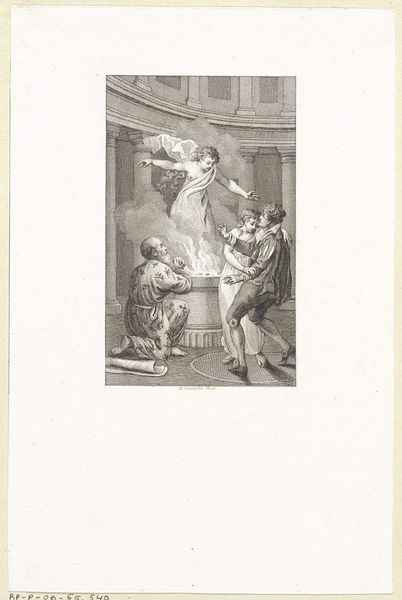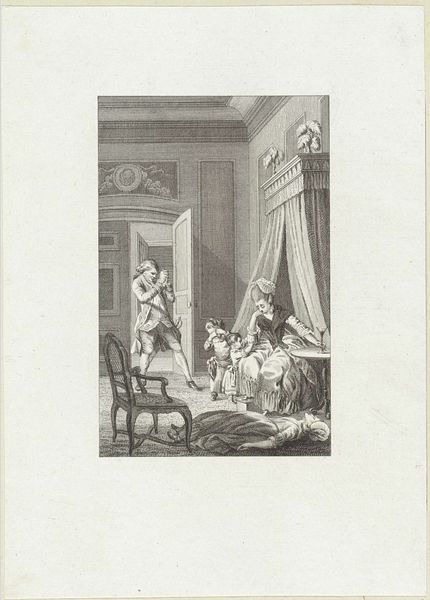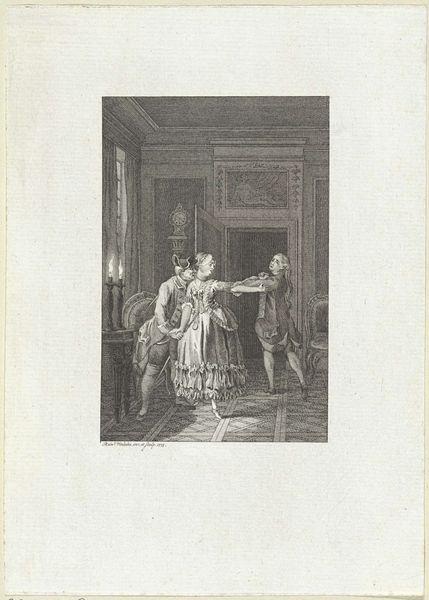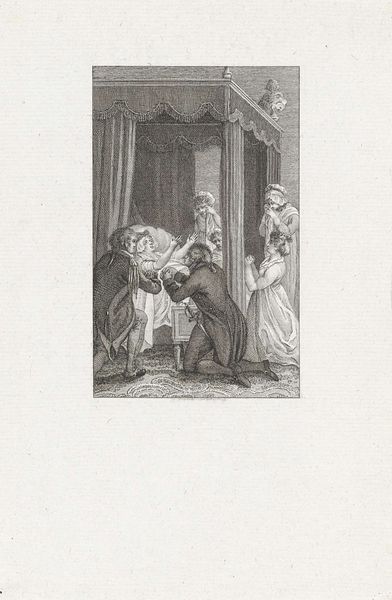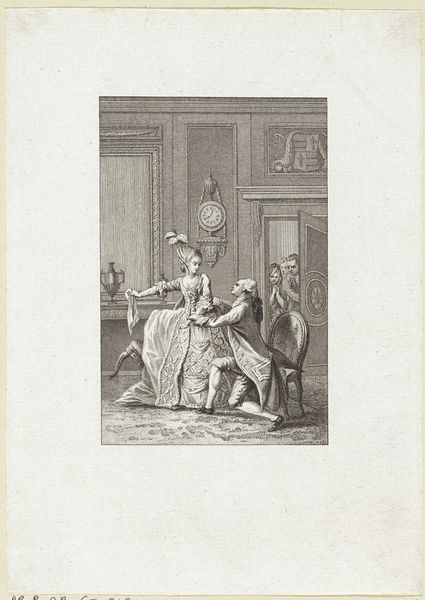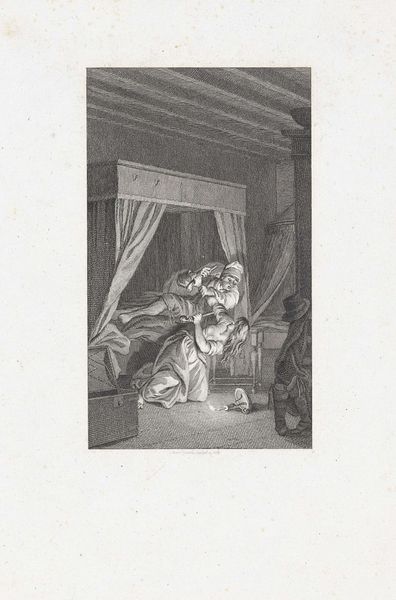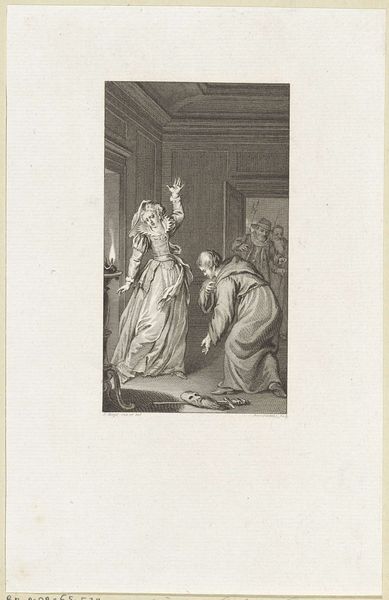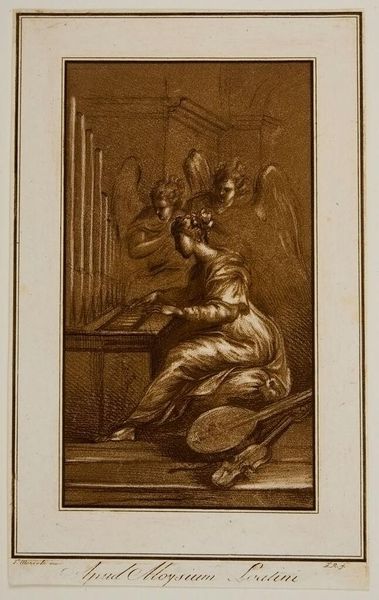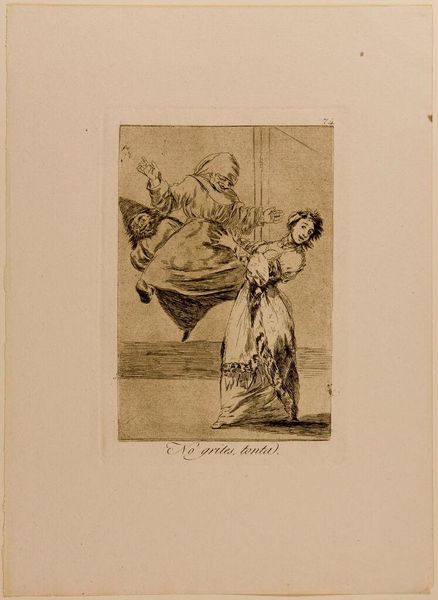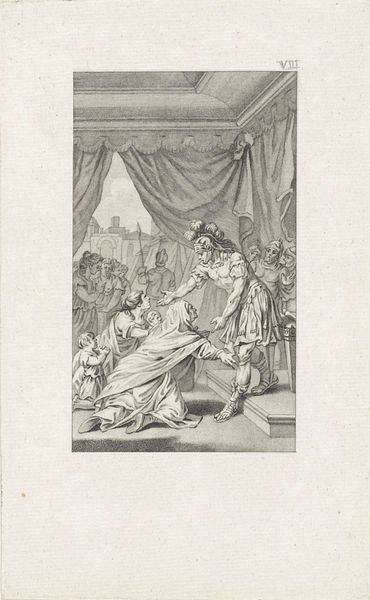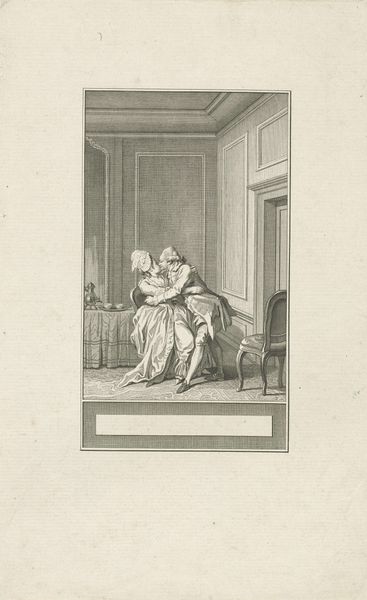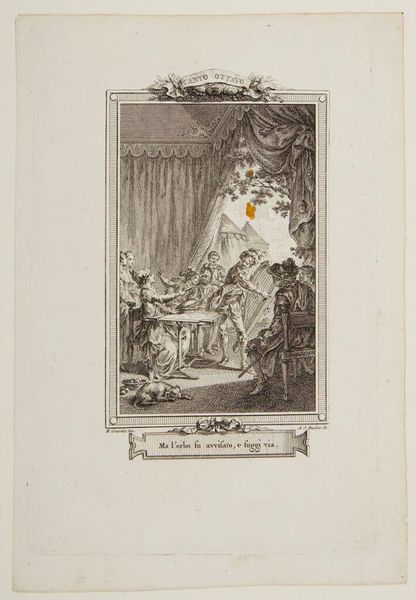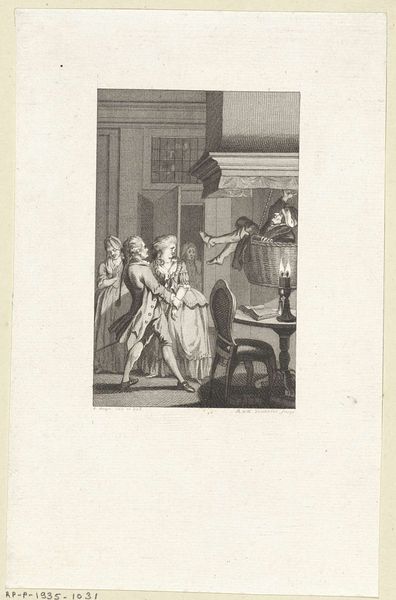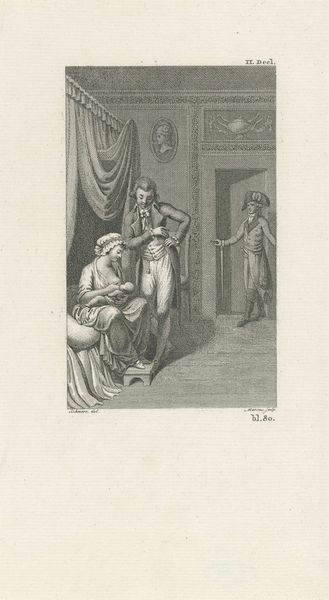
print, intaglio, engraving
#
neoclacissism
#
narrative-art
# print
#
intaglio
#
old engraving style
#
figuration
#
history-painting
#
engraving
Dimensions: height 205 mm, width 145 mm
Copyright: Rijks Museum: Open Domain
Curator: We are looking at "Man on the verge of stabbing another man," an intaglio print made in 1786 by Reinier Vinkeles. It’s a work very much in the Neoclassical style, currently residing here at the Rijksmuseum. Editor: What strikes me immediately is the tension, the precariousness of the moment captured. The sharp angles of the would-be attacker's arm juxtapose violently with the curved forms of the figures he’s attacking, all framed within that meticulously detailed, yet static interior. Curator: Precisely. The scene is a study in controlled passion, if that makes sense. The print reflects the historical context, the rise of reason and order mirrored in artistic form even when depicting violent subject matter. History painting of this era often served to instruct viewers morally, reminding them to shun unlawful behavior. Editor: The figures' gestures also remind me of a stage. Each one of them has a dynamic pose; in particular, I admire how Vinkeles used sharp contrasting lines to show light on their clothing. Notice also how all those directional lines converge to form the potential stabbing location? It’s an ominous focal point. Curator: Yes, the use of classical composition principles is very present here. While we don’t know exactly what the narrative this work represents is, it seems the image may reference ideas around justice. Prints like this also played a role in disseminating political ideologies. They allowed access to art and ideas, especially with their rising distribution at this moment in time. Editor: The controlled nature is indeed the main topic. Even with so much dramatic tension in the composition, with so many converging and opposing vectors, the static quality comes off to me as forced, artificial, similar to theater poses from back then. Curator: Well, in looking at the society that fostered this art and at the values this reflects and promotes, it allows for critical exploration of justice, reason, and control. The narrative—whether familiar or not—invites the audience to think critically about this. Editor: It makes you think that despite all these historical contextual factors, sometimes pure, unadulterated emotion is superior. Thank you for bringing your point of view here, very enlightening! Curator: Thank you, yours was equally enlightening. Analyzing the historical and artistic qualities that make up this work allowed us to think critically about society.
Comments
No comments
Be the first to comment and join the conversation on the ultimate creative platform.
